Control valves are critical components in any process industry. In process industries, these control valves are used to control all types of fluids such as water, gas and steam in the process.
As fluid passes through a control valve, the pressure systems across the control valve, especially the pressure drop, change with fluid flow through that pipe or line.
Pressure drop data is used in control valve sizing and is very important. For that, we need to predict the actual pressure drop in the control valve systems from minimum flow to normal and up to maximum flow rate.
If the pressure drop in the control valve is zero. In this case, the controller will be able to change the value of the controlled variable to zero, and as a result, it will have no effect.
Valve control flow is a function of pressure drop across the valve and valve movement.
In choosing a control valve for a specific application in the process industry, pressure drop plays an important role in determining the valve, type of trim, etc.
You need an engineered control valve to prevent pressure drop and perform well.
The maximum pressure drop across the control valve can withstand shutdown or partial or full opening.
In general, globe valves are more prone to pressure drop due to the uneven nature of the moving parts.
In general, the flow rate in the control valve is affected by the pressure drop in the control valve.
As the flow rate through the control valve increases, the pressure drop across the valve decreases.
until it reaches the minimum allowable pressure drop across the valve at maximum fluid flow.
As the flow rate through the valve decreases, the pressure drop across the control valve increases and increases accordingly.
Changes in pressure drop in the control valve are shown in the following diagram
From the above diagram, we can conclude that:
As the flow across the control valve increases, the pressure upstream of P1 decreases. and the downstream pressure P2 increases.
As the flow ΔP increases, the pressure drop across the valve decreases.
At no flow, ΔP is maximum and downstream pressure P2 = 0.
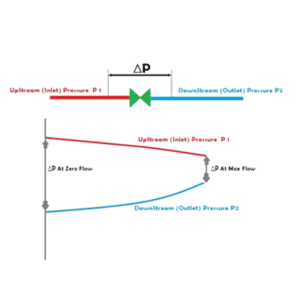
Pressure drop system diagram in a control valve
What is the pressure drop in the control valve? How is it measured؟
Pressure drop across a control valve is the difference in system pressure between two points in a pipeline with flowing fluid.
And it is caused by the resistance to fluid flow through the line or pipe.
Or another term, pressure drop is the difference between inlet pressure and outlet pressure.
This differential pressure or deltap (ΔP) is the inlet pressure minus the outlet pressure.
The pressure drop in the valve occurs due to frictional forces.
P1 is measured as 2 pipe diameters upstream or valve inlet, and P2 is measured as 6 pipe diameters downstream or valve outlet.
What is the importance of pressure drop in the size of the control valve?
Pressure drop is an important element in choosing the right size of control valve.
In the design of a system, the design engineer must have a relevant idea about the pressure drop to ensure the proper selection of the control valve.
How to calculate the pressure drop in the control valve?
Calculate the pressure drop in the control valve using the following formula:
∆p = pressure drop, in Pa
K = milk coefficient
ρ = density of water, 997 kg/m3 v
Water speed, in meters per second
The pressure drop in a control valve is about 0.5 times the density time factor K of the water times the water velocity squared.
The unit is Pascal (Pa). But usually we divide it by 1000 to get kilopascals (kilopascals).
Which control valve has the highest pressure drop
The globe valve has the highest pressure drop in the fully open state compared to other valves.
This is due to the change in direction of fluid flow inside the control valve.
The L/D ratio for globe valves is approximately 340.
Which control valve has the lowest pressure drop?
Gate valves have the lowest pressure drop.
This type of valve is mostly used in industrial piping.
There is less turbulence inside the gate valve and it reduces the possibility of pressure drop.
How to calculate the pressure drop in the control valve knowing the Cv and the flow rate?
To calculate the pressure drop, flow rate or flow coefficient across the valve, the basic valve size equation is as follows:
Q = C v * √∆P
For fluids other than water, a correction factor is necessary for the difference in solution specific gravity.
which will be this modified formula:
Q = C v * [√∆P/S]
S = specific gravity of the liquid used in the liquid valve.
Conclusion
In this article, we investigated the pressure drop in the control valve, introducing the control valve with low pressure drop and the most type of control valve that has a large pressure drop.
Kiasanat is a supplier of all types of valve controls, globe valves, Samson valve controls, Fisher valve controls, Honeywell valve controls, Masonilan valve controls, etc.
What are boiler pressure gauges?
Measure dead band in valve control

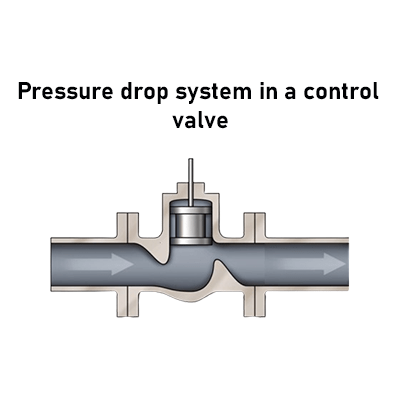
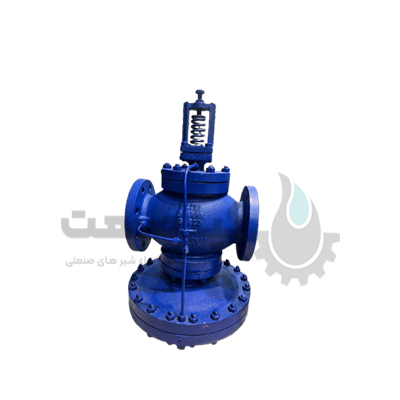
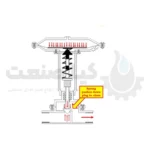
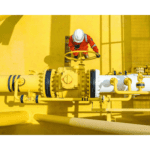

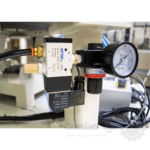
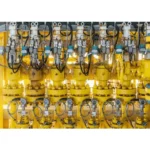

20 Comments
2025/06/11 Time 23:07
من تو یه پروژه صنعتی با فشار افت تو شیر کنترل مواجه شدم که واقعاً سردردم کرده.اصلاً چطوری حل میشه؟
2025/06/11 Time 23:07
یه سوال، واسه کالیبره کردن فشار توی شیر کنترل چه تجهیزاتی نیازه چون پروژهم گیر کردن؟
2025/06/11 Time 23:07
خب من که اطلاعاتم خیلی کمه، ولی میگن افت فشار تو شیرها میتونه باعث برهمزدن جریان بشه
2025/06/11 Time 23:07
تا حالا کسی این مشکل فشار افت تو شیر کنترل رو داشته؟بگین چیکار کردین خوب شد یا نه؟
2025/06/11 Time 23:07
من هرچی میزنم، این افت فشار تو سیستم همش اذیت میکنه.راهنمایی بکنین که چی کنم؟
2025/06/11 Time 23:07
راستی آیا فشار افت تو شیر کنترل میتونه رو کیفیت محصول هم تاثیر بذاره یا نه
2025/06/11 Time 23:09
من تو یه پروژه صنعتی با فشار افت تو شیر کنترل مواجه شدم که واقعاً سردردم کرده.اصلاً چطوری حل میشه؟
2025/06/11 Time 23:09
یه سوال، واسه کالیبره کردن فشار توی شیر کنترل چه تجهیزاتی نیازه چون پروژهم گیر کردن؟
2025/06/11 Time 23:09
خب من که اطلاعاتم خیلی کمه، ولی میگن افت فشار تو شیرها میتونه باعث برهمزدن جریان بشه
2025/06/11 Time 23:09
تا حالا کسی این مشکل فشار افت تو شیر کنترل رو داشته؟بگین چیکار کردین خوب شد یا نه؟
2025/06/11 Time 23:09
من هرچی میزنم، این افت فشار تو سیستم همش اذیت میکنه.راهنمایی بکنین که چی کنم؟
2025/06/11 Time 23:09
راستی آیا فشار افت تو شیر کنترل میتونه رو کیفیت محصول هم تاثیر بذاره یا نه
2025/06/11 Time 23:09
من تو یه پروژه صنعتی با فشار افت تو شیر کنترل مواجه شدم که واقعاً سردردم کرده.اصلاً چطوری حل میشه؟
2025/06/11 Time 23:09
یه سوال، واسه کالیبره کردن فشار توی شیر کنترل چه تجهیزاتی نیازه چون پروژهم گیر کردن؟
2025/06/11 Time 23:09
خب من که اطلاعاتم خیلی کمه، ولی میگن افت فشار تو شیرها میتونه باعث برهمزدن جریان بشه
2025/06/11 Time 23:09
تا حالا کسی این مشکل فشار افت تو شیر کنترل رو داشته؟بگین چیکار کردین خوب شد یا نه؟
2025/06/11 Time 23:09
من هرچی میزنم، این افت فشار تو سیستم همش اذیت میکنه.راهنمایی بکنین که چی کنم؟
2025/06/11 Time 23:09
راستی آیا فشار افت تو شیر کنترل میتونه رو کیفیت محصول هم تاثیر بذاره یا نه
2025/06/11 Time 23:10
من تو یه پروژه صنعتی با فشار افت تو شیر کنترل مواجه شدم که واقعاً سردردم کرده.اصلاً چطوری حل میشه؟
2025/06/11 Time 23:10
راستی آیا فشار افت تو شیر کنترل میتونه رو کیفیت محصول هم تاثیر بذاره یا نه